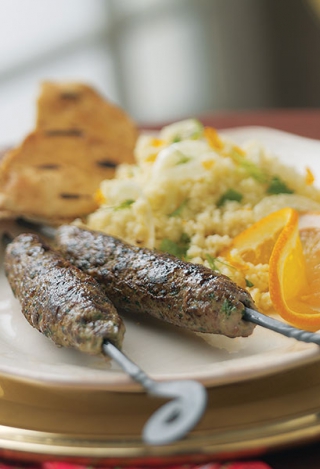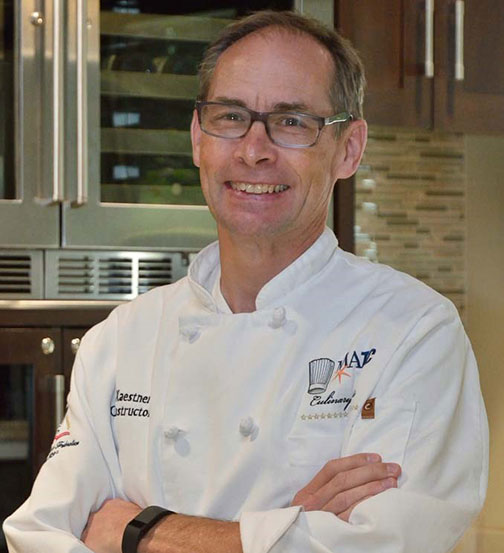
Lesson Plan: Sausage Making with American Lamb
04 September 2018Chef Instructor Jack Kaestner shows instructors how to make lamb sausage in applications from Moroccan to Greek.
By Chef Instructor Jack Kaestner, Milwaukee Area Technical College
 Almost any kind of meat can be used in sausage making. At the 14th annual CAFÉ Leadership conference, Chef Jack Kaestner explored sausages made with American lamb. Lamb is often thought of as a fine dining protein, but it’s becoming a more common staple on non-fine dining menus with trending ground lamb and lamb sausage dishes.
Almost any kind of meat can be used in sausage making. At the 14th annual CAFÉ Leadership conference, Chef Jack Kaestner explored sausages made with American lamb. Lamb is often thought of as a fine dining protein, but it’s becoming a more common staple on non-fine dining menus with trending ground lamb and lamb sausage dishes.
In his Lesson Plan, Kaestner covers:
- Tools and ingredients for making sausages
- Grinding techniques
- Mixing tips
- Building flavors
- Stuffing techniques
- Recipes from spicy merguez to Greek-inspired sausages
About the U.S. sheep industry and American lamb
There are more than six million sheep in the United States and more than 80,000 sheep farms and ranches, the vast majority of which are family owned and operated. Flocks in the East and Midwest are smaller, usually between 50 to 300 animals, while operations in the West range from those same small flock sizes up to 10,000 sheep. Sheep are raised in every state. Leading sheep production states are Texas, California, Colorado, Wyoming and South Dakota.
Today’s U.S. sheep producers focus on producing flavorful and tender meat, with wool as the byproduct. The most common breeds of sheep in the United States are Dorset, Hampshire, Rambouillet and Suffolk. These breeds are known for their larger size.
Sheep are generally processed at 7 to 10 months of age. The average weight of a lamb heading for processing is around 135 pounds. Meat from a sheep less than one year of age is called lamb. Meat from an older animal is referred to as mutton. All American Lamb is either USDA inspected for wholesomeness or inspected by state systems equal to the federal government.
For more information on lamb, please read Don’t Be Sheepish About Lamb, an article written by Milwaukee Area Technical College’s John Reiss that takes instructors on a lamb tour from farm to table and everything in between.
